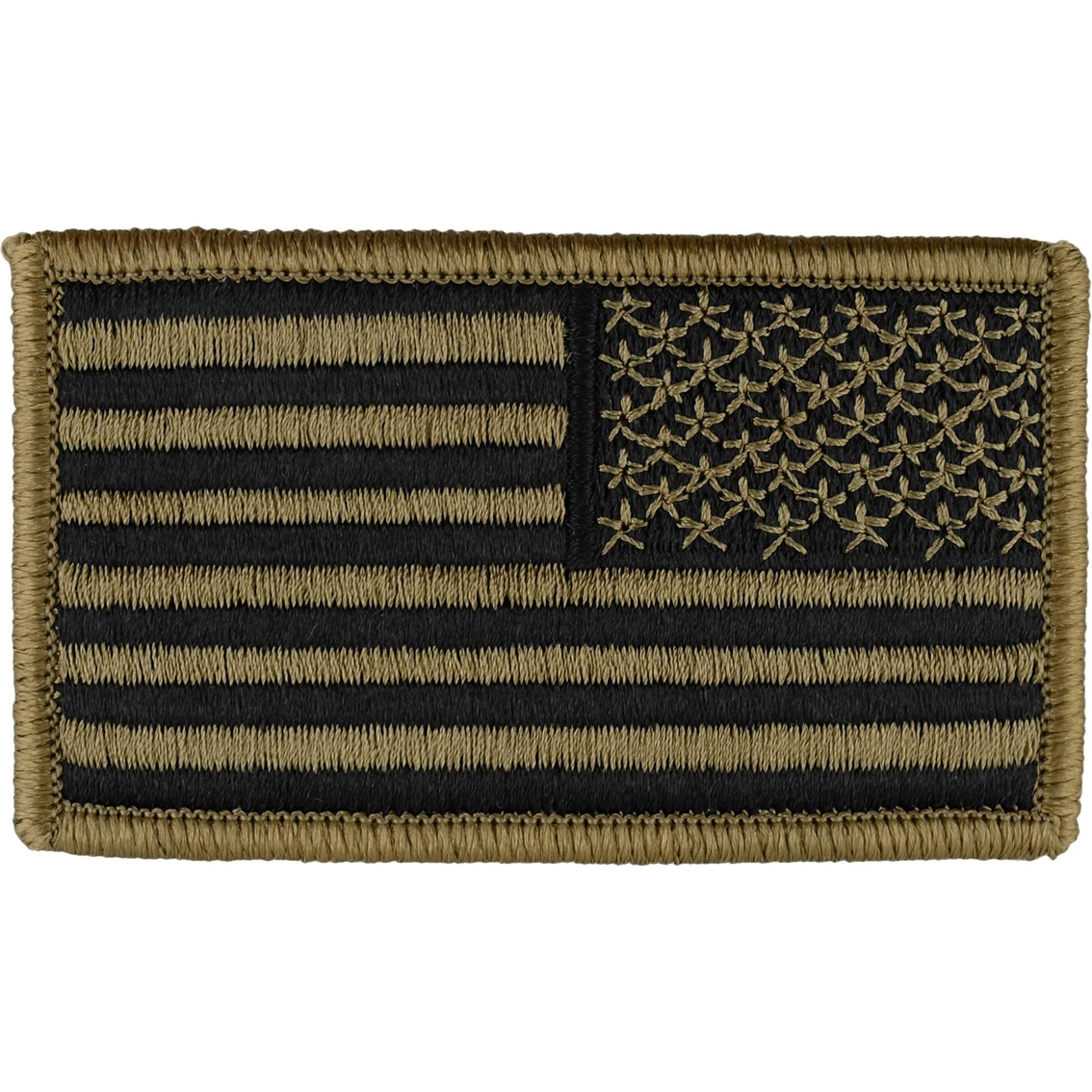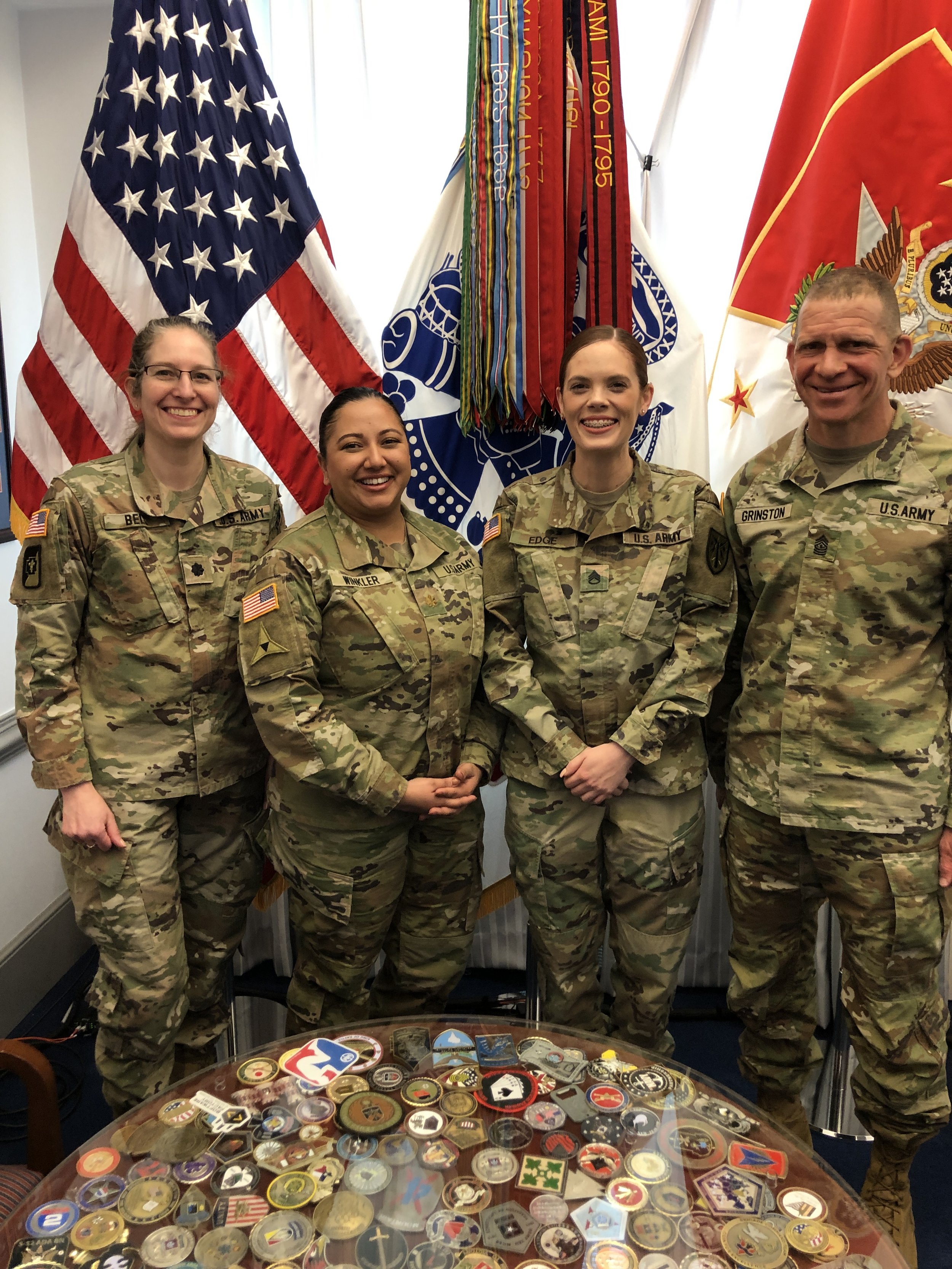Flag Army Regulation - The products and services listed below are selected independently of the sales and advertising. However, a small commission can be earned from purchasing any product or service through a link to the retailer's website.
Have you ever wondered what the American flag looks like on military uniforms and other uniforms? Choice is not just a fashion statement. Instead, there is a deeper meaning behind this alignment.
Flag Army Regulation

Military Regulation 670-1 ("Wear and Appearance of Army Uniforms and Emblems") requires service members to wear their U.S. it. Flag patch with the star facing forward. When worn in this position, the flag appears to be forward, blowing in the wind as the wearer walks.
Tabs Of The United States Army
The field of stars should also be close to the wearer's heart. This means that when wearing the left sleeve, the American flag looks normal. When worn properly, it looks inverted.
The position of the American flag in this manner is very important. Flag historians explain that the flag should not be in a retrograde position (with the stars facing backwards).
Tim Marshall, author of "Worth Dying For: The Power and Politics of Flags," told Business Insider, "[Americans] hold fast to the [flag] that it must always go forward." Now on the flagpole with the stars on The links next to the flagpole. This is the most prestigious position. On the patch, you look at it differently, and when a soldier or marine forward moves forward, the US it. Flag must face forward. "It should not be seen in retreat."
This also explains why the American flag flies with the star facing backwards on military vehicles and other official government vehicles. When the car moves forward, the flag will come out as if it was blown by the wind - with the union (star) leading the way.
St U. S. Infantry Regimental Flag
If you put the US it. Flag on your vehicle Remember that the flag guidelines state that the flag should always be on the right side of the vehicle, as highlighted in the photo below.
The American flag came into force in 1777, when historians believe that Philadelphia tailor Betsy Ross first sewed it. Between 1777 and 1960, Congress went through a series of activities that influenced and changed the shape, pattern, and design of the flag before finally settling on the stars and stripes designs we all know and love today.
According to the law, there are many places in the United States where the flags fly 24 hours a day, 7 days a week, including the White House and Port McHenry.
For more interesting facts about flags and the correct way to display flags, visit the US it. Government website. Colonel J.P. Maddaloni 1st Battalion, 14th Artillery commander (left) places combat patch of the 214th Fire Brigade on Capt. Brandon McKean. Command Sgt. Gen. Daniel Nolan also presented 1st Sgt. Kevin Carter with his combat patch. Battalion H ... (Photo credit: US) View original
Flag Day: Its History And What It Means To Upstate Locals
Fort Sill, Okla. (June 6, 2013) - May 30 marks the 30th day of deployment for the Iron Warriors of the 14th Artillery Battalion.
Medals are commonly referred to as combat patches; It is worn on the right sleeve of a uniform under the US. it. Flag to indicate a unit serving under the United States. It is awarded to soldiers deployed in combat zones for 30 days or more.
The battle patch is a symbol of military service during combat operations since World War I, through World War II, and continues to serve as a symbol of personal devotion.
The warriors received their patches for their deployment to the United Arab Emirates, where battalions provide security and assistance to their allies while providing timely and accurate firepower when needed.
U.s. Army E 4 Specialist Regulation Rank Subdued Pin Set Usa Made
Soldiers who are combat veterans are allowed to wear a permanent patch from the unit they serve on their right shoulder. According to regulation 670-1, soldiers are allowed to wear the combat patch of their high command. This does not depend on whether a high headquarters is deployed or not, or soldiers are fully deployed. All Steel Warriors receiving their first combat patch will wear the 214th Fires Brigade.
"My patch is not just a deployment patch, but a testament to the dedication and loyalty of my unit and the unit," said Sp. Joshua Abel. "It also reflects the bond I hold with my brothers in arms. It's not just because we wear accessories. "The same honor, but because we're all in hand."
More than a third of its total force was never deployed to combat zones. Many other reasons why receiving this patch is a special opportunity for soldiers. This is a special event for many veterans with multiple deployments because they get to get patches on other soldiers getting their first.

"The patch ceremony feels like an achievement, among many other things to come, and it inspires me to be proud to wear it," said Pvt. Thomas Harmon.
Soldiers Earn Emblem Of Combat
A badge is something that soldiers can wear on their uniform for the rest of their lives, often mentioned as a topic of conversation by others who recognize the patch when they are away from their duty station.
"There is a special bond that is shared within the chain. The patch ceremony brings it to light by strengthening our bond with each other during our time here," Abel said.
Although every soldier participating in the ceremony can now wear a patch of the 214th Fire Brigade, some may decide to wear the patch of the previous unit with which they graduated.
"Most of the soldiers here, who were previously deployed, loved to wear their first battlefield because of the catastrophic events that some of them experienced during their war missions," said Anthony Paris. "They appreciate the patches they received on this deployment because we are all proud to be Steel Warriors, even if some choose to wear the patches of the former unit."
Confederate Flag Effectively Banned From Military Installations
Some of the heavily deployed troops have decided that they will continue to wear the 214th patch, including the battalion commander, Lt. Col. JP Madaloni.
"I will wear the 214th Fires Brigade patch today and will continue to wear it for the rest of my service in," Madaloni said. "I hope the Steel Warriors will wear this patch with pride and when someone asks them where they got the patch, they will proudly answer that they got the patch in the United Arab Emirates by serving" with the 1-14 Artillery Regiment, the Best American I know."
For some, the ceremony brought a smile of happiness and pride. For others, it was a solemn moment of reflection. However, for everyone who attended and who attended, this is just another example of the solidarity that runs deep within the Steel Warriors.

"I am honored to have First Officer [Kevin] Carter place my patch on my right shoulder while giving me words of encouragement for the future," Harmon said.
Army Updates Rules For 'flagging' Soldiers
After months of training and exercise at Fort Sill, the Battle Patch ceremony validates the Steel Warriors' readiness to complete missions and demonstrate Soldiers' commitment to our nation. According to regulation 600-25 - Greetings, courtesy and courtesy visit. Soldiers in uniform will stand, face the flag or music, and raise their hands when reveille begins to play. Civilians and soldiers not wearing uniforms... (Photo credit: United States) VIEW ORIGINAL
"The bugle call has been a tradition since the birth of 1775, which has become part of the foundation for our standards and discipline," said Command Sgt. General John P. Drawbond, senior leader of the garrison. "Members of our armed forces have different traditions and civilities in their service, but what we all share is the honor of the flag."
"We are part of a disciplined culture that pauses twice a day to honor when our American flag is raised and lowered," Drawbond added.
Reveille is sounded in the morning when the flag is raised, while retreat is held each evening when the flag is lowered. "To the Colors" was played immediately before the start of the retreat. On some installations, the cannon will signal the start of reveille and retreat.
Military Salute Newest Uniform Stock Photo
According to regulation 600-2525 - Honor and Salute, soldiers in uniform will stand, pay attention to the flag or music, and raise their hands when reveille begins to play. Civilians and non-uniformed soldiers will stand attentively, face flags or music, and put their hands over their hearts. The same procedure should be followed when "To the Colors" begins. As the retreat begins, members of the uniformed services will salute the flag as civilians place their hands over their hearts.
As part of the requirement, drivers and occupants will stop their vehicles, leave and give the right respect when the music starts.
"We invite civilian workers and guests to join us.

Post A Comment:
0 comments so far,add yours